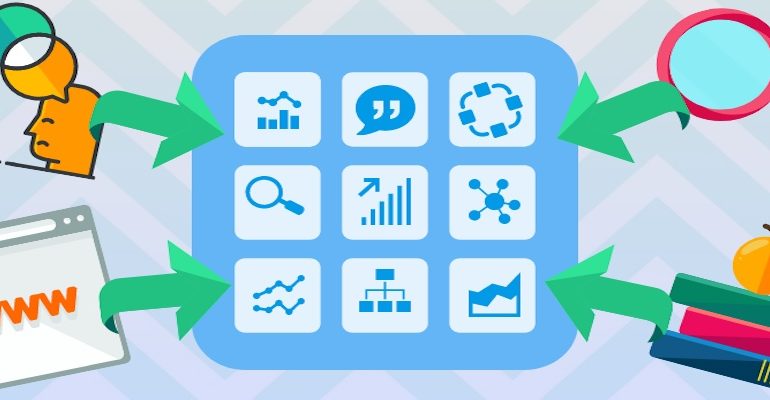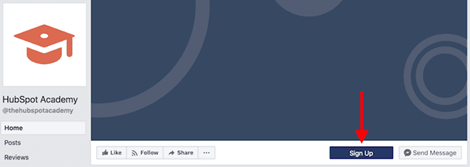By Scott Clark
Traditionally, brands advertised in the mediums of the day, namely print (newspapers and magazines), television and radio. While those mediums are still used today, the digital marketplace has opened up a multitude of new digital marketing opportunities, including:
-
Pay-Per-Click (PPC)
-
Search Engine Optimization (SEO)
-
Social Media Marketing
-
Content Marketing
-
Email Marketing
-
Influencer Marketing
-
Mobile Marketing
-
Viral Marketing
In this article we are going to take a close look at the 8 most popular digital marketing mediums, and tell you how they can be used to your advantage.
Pay-Per-Click (PPC)
Pay-per-click (PPC) is a digital advertising model that is used to drive traffic to websites. An advertiser typically pays a search engine (Google Ads, Amazon Advertising, or Microsoft Advertising) when the ad is clicked. You have likely seen PPC in action when you search for something on Google.

In the image above you can see the first two results of a search for “CRM platform” are ads. In fact, the first four results are PPC ads.
Brands bid on a chosen keyword or search phrase, which then puts the ad into one of four ad spaces offered by Google, for example. The cost per click (CPC) is based on the quality score of the site and the competition of the chosen keyword. Brands typically use the tools provided by Google Ads to determine their keywords and the CPC.
Nate Tsang, founder and CEO at WallStreetZen, a stock market analysis service provider, said that pay-per-click marketing can be a very powerful digital marketing strategy when it is done by those who truly understand the practice. “You should only do this strategy if you are familiar with it or hire someone who is an expert in this field. Doing it on your own without the proper knowledge can be a waste of money,” said Tsang. “I have seen many brands waste thousands on pay-per-click campaigns because they are leading them to the wrong webpage or not being specific on what the visitor must do on the page. A successful PPC campaign must have a great and straightforward landing page so you can convert your visitors and not waste your budget.”
Search Engine Optimization (SEO)
Search Engine Optimization (SEO) is the art, as it were, of optimizing a website so that when a potential customer searches via Google, or to a lesser degree, Bing or other search engines, the web page will show up at the top of the search engine results pages (SERP). If a brand sells monitor speakers for recording artists, and they have a local store in Cleveland, Ohio, then SEO could be used to bring the website up in the listings by using appropriate keywords throughout the website, in the titles of the pages, in the meta keyword and description tags, and in the various headers throughout the page or site.
This is not to say that the site or page should be keyword spammed, that is, stuffed with keywords without relevant content. Content is still king, and long gone are the days when black hat SEO tactics can be effectively used. Tactics today should include backlinks to the site from all of the brand’s social media presences, and web pages should include relevant content. Content can be created about the topic, as in our example, a page that discusses the various types of monitor speakers and their use, with links to the various monitor speakers the brand sells scattered throughout the page (this is Content Marketing, which we will also discuss). Keyword and Description meta tags are still used, but content relevance is more important today. Also, especially for localized businesses, having a Google business page, which puts a brand on Google Maps, as well as a Yelp business page, will help to pull a brand up to the top of the listings.
Below the PPC ads are the organic (non-paid) results, which also include the “People also ask” section, which features pages in which a specific question is answered by the content of the page (search engine gold — this tactic is heavily used by SEO marketers).

Often, SEO is done through a third-party company that specializes in SEO, rather than an in-house SEO team or the marketing department. SEO used to be fairly simple, but continual changes in Google’s algorithms have made it more of a precise practice that involves specialization.
Ian Sells is founder and CEO of RebateKey, an online rebate provider, and like many marketers we spoke with, SEO is at the top of his list, because if customers cannot find your website, no business can occur. With so many websites out there on every possible topic, it’s challenging to get on top of the search engine results pages. “Being on top of SERPs, that is, being on page one, gives you a lot more traffic since your site gets seen by more eyes. The advantage of this is, while it takes a lot more effort initially, once your site gains the momentum, you don’t have to spend so much on it, unlike in ads where you have to continuously spend,” explained Sells.
Social Media Marketing
As one would imagine, social media marketing is when brands use their social presences, such as Facebook, Instagram, LinkedIn, or Twitter, among others, to target their customers. This is accomplished through targeted marketing ad campaigns, “like” campaigns, and posts offering special offers and discounts. Detailed demographic information about gender, ages, locations, times on the site, and more can be used to target specific demographics and groups of people.
“This is actually very powerful since a lot of people are on social media. We’re actually revamping our Instagram strategies as well as our Facebook strategies because we’re seeing the potential of the traffic they bring to our site,” said Sells. “The disadvantage of social media marketing is, sometimes, the engagement stays there. That’s totally useless, if your conversions happen on your site. So you have to make the effort to bring the traffic from your social media handles to your site.”
Content Marketing
We briefly discussed content marketing in the SEO section of this article, when we spoke about creating pages that do not directly sell products or services, but provide information and details about specific subjects that are related to the products or services a brand sells. By providing relevant content that appeals to a brand’s target audience, brands can attract customers to their website, and this content also helps improve SEO for the website.
“Content marketing is broad. In our case, we use several kinds of videos on YouTube, primarily informative ones,” said Sells. “These are helpful to increase awareness about your brand and help people who are interested to get to know your brand, product, or service even more. Sometimes, just a little explanation is enough to convince people to try your service.”
Brad Touesnard, founder and CEO of SpinupWP, a cloud-based server control panel designed for WordPress and he can attest that the right content can be a gamechanger. “We are in the server industry and our most popular blog post compares five of the top server providers. Our experts ran tests on each provider and we shared our results in our blog post. The blog post generated a lot of interest from industry professionals who were eager to see our data,” Touesnard said. “Currently this blog post generates 23.4% of the total search engine traffic to our site and ranks on the first place of Google’s search results for its primary keyword.”
Email Marketing
While many marketers might believe that email is a dying marketing channel, the opposite is true — email marketing is still one of the most effective channels a brand can use. This really shouldn’t be surprising, given the number of email users worldwide. According to a report from Statista, in 2020, approximately 306 billion emails were sent and received each day, with 3.9 billion people using email every day. That’s half the global population! Marketers should take note that according to the DMA Marketer Email Tracker, for every dollar that’s spent on email marketing, the average expected ROI is $42.
Unlike other marketing channels, marketing emails are only sent to those customers who have given permission for the brand to do so — which means they are actually interested in what brands are offering, unlike ads on social media where they do not have a choice but to see ads.
Typically, marketers use email marketing software which allows them to automate the process, send personalized emails, and often includes performance optimization and analytics functionality. By tracking key performance metrics, brands are able to determine which email marketing campaigns are effective, and which ones are not.
Influencer Marketing
Influencer marketing is still relatively new, and relies on people who have gained a following on social media either for being entertaining, informative, or being an expert in their field. Influencers typically promote themselves through blogs, videos, and social media posts. Brands look for influencers that are connected to their customers in some way. Perhaps the influencer has a cooking show on YouTube, such as Sam the Cooking Guy. Not only does he sell his own line of cooking utensils and books, but he is sponsored by Catalina Offshore Products and Lars Remodeling and Design. In the case of Sam the Cooking Guy, these two brands recognized that Sam, who has 2.93 million YouTube subscribers, reaches many people who are likely to be interested in their products or services.
“Majority of the videos we have on YouTube by other people are not sponsored. A lot of sellers and buyers really enjoy our products. And to be honest, this is really more powerful than paid ones. People trust other people’s reviews. Videos from influencers or at least people with a following are also helpful. If influencers say your product or service is cool, people who are following them are more likely to try your product primarily because the influencer said so,” explained Sells.
Dave Herman, president of EZ Surety Bonds, told CMSWire that thanks to the constantly changing digital landscape, there are many different types of digital marketing to take advantage of, but not all of them are appropriate or effective for every business. “Influencer marketing is becoming increasingly popular these days as more and more people gain fame and recognition on social media platforms. This is why a lot of businesses are taking advantage of it. While it really helped many brands grow, not every business can get the growth they need from this type of marketing. It is also not as easy as most people think it is. You need to research the right influencer that will represent your brand and ensure that they get the engagement you need to market your products or services.”
Mobile Marketing
It makes sense for marketers to focus on mobile marketing, given the vast number of mobile users. A report on mobile usage from Statista indicated that in the third quarter of 2020, mobile devices accounted for 50.81% of global website traffic. With those kinds of statistics, it’s pretty obvious that mobile marketing can be used to reach millions of customers.
Seth Lytton is chief operating officer at The Detroit Bureau, an automotive industry news publication, thinks mobile is a big opportunity for marketers. “Millions use their phones every hour. Mobile marketing gives you access to millions at once, and many customers have their phones with them at multiple times during the day. You can accurately determine your audience with mobile marketing,” said Lytton.
That said, as Lytton explained, brands must be careful not to overuse mobile marketing, at the risk of losing their customers completely. “On the other hand, many find ads annoying on their phones,” said Lytton. “Some people go out of their way to avoid some advertisements by using ad blockers, and more still get so annoyed with advertisements that they may blacklist the company entirely.”
Viral Marketing
Viral marketing typically relies on social media networks, but unlike social media marketing, the marketing is done by customers themselves, as they spread information on various social media networks about a product, service, or brand with other people. Marketing is thought to be “viral” when it reaches the point where it’s being shared by the general public, not just the brand’s target audience.
An example of viral marketing is memes, which may include funny text written above an image. Crazy Nate created a meme that features the character Nemo swimming in the ocean, next to a box of McDonald’s fries, with the words “Watching Finding Nemo; Why I Want McDonalds” superimposed on the image. McDonalds obviously had no part in the creation of this meme, but one can be fairly certain that they definitely do not mind that it went viral.
Brands such as Wendy’s, Dennies, and McDonalds will often create funny, light-hearted videos, Tweets, or memes themselves, and post them on social media such as Twitter, YouTube, Facebook, Instagram, TikTok, and other sites. They will then be shared by people who found them to be humorous, and those they shared them with will also share them with others, causing the video or meme to go viral. Here is an example of a Tweet from Wendy’s roasting McDonalds:

Keep in mind that viral marketing is never a certainty — one cannot force something to go viral. Either it goes viral, or it doesn’t. Whatever the case, social listening should be used to monitor mentions of the brand on social media.
Final Thoughts
As you can see, there are many digital marketing strategies that are available to market a brand. Brands are able to take advantage of their social media presences, and use influencers to spread their message, or they can use the more traditional email marketing and content marketing techniques. PPC and SEO are still extremely useful marketing strategies, and mobile marketing has never played as large a role as it does today. Using a combination of these strategies, digital marketers are able to promote a brand’s products and services, and turn leads into customers.
Feature Image Credit: Adobe




















